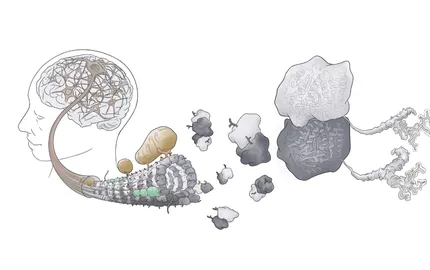- Home >
- Directory of the Institut Curie >
- CARSTEN JANKE
Functions within Institut Curie
Presentation
My research focusses on a biological phenomenon known as the ‘tubulin code’. The idea that MTs might be able to adapt to different functions by subtle changes of their biochemical composition was first formulated in 1976 by Fulton and Simpson in their “multi-tubulin hypothesis” (Fulton & Simpson, Cell Motility 1976). While many novel PTMs of tubulin where discovered in the 1980s, evidence for functions of the tubulin code remained extremely scarce, and the hypothesis was increasingly dismissed by the scientific community. Equipped with an expertise in neurochemistry, biophysics and molecular and cell biology, I dedicated my career to reversing this trend in order to reveal the functions of the tubulin code.
(1) As a researcher with Bernard Eddé, and later in my own team, I discovered a large number of enzymes that catalyse tubulin polyglutamylation and polyglycylation (Janke et al., Science 2005; van Dijk et al., Mol Cell 2007; Rogowski et al., Cell 2009; Wloga et al., Dev Cell 2009; Rogowski et al., Cell 2010; Tort et al., Mol Biol Cell 2014). This built the foundation for restarting this virtually neglected biological phenomenon. (2) My team demonstrated that tubulin modifications act mostly as fine-regulators of MT functions, and are thus important for homeostasis. We discovered the importance of tubulin polyglutamylation and glycylation for neuronal homeostasis and its implication in neurodegeneration (Magiera et al., EMBO J 2018; Shashi et al., EMBO J 2018), male fertility (Giordano et al., J Cell Sci 2019; Gadadhar et al., Science 2021), ciliary functions (Bosch Grau et al., J Cell Biol 2013; J Cell Sci 2017; Gadadhar et al., J Cell Biol 2017) and cancer (Rocha et al., EMBO J 2014). (3) My vision and the work of my team has further driven the development of novel technologies, such as the purification of unmodified tubulin to study the impact of tubulin posttranslational modifications by in-vitro reconstitution assays (Souphron et al., Nat Protoc 2019). The work of my team spearheaded a demising research field into the limelight of modern biology. The concept we developed can help researchers to overcome the barriers between molecular studies and physiology. It can deliver novel insights on how apparently insignificant molecular alterations play a key role in the life of an organism, and how these events, if perturbed, can cause late-onset diseases in humans.
Latest publications
Proceedings of the National Academy of Sciences - 14/10/2025
iScience - 01/09/2025
Latest news
Contact CARSTEN JANKE
Contact me by phone or by filling in the form below
Office: 0033169863127




